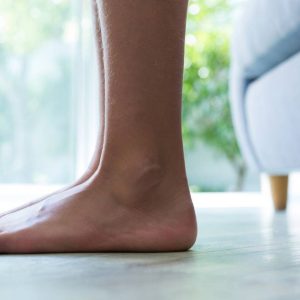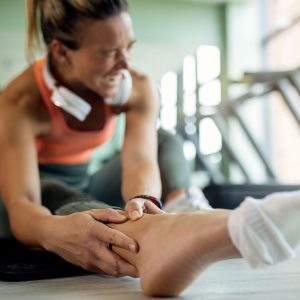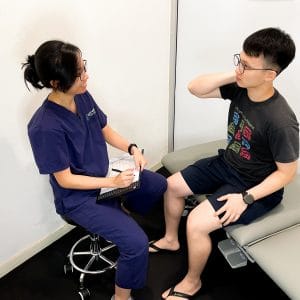
What are the benefits of pulsed electromagnetic field therapy (PEMF) for post-surgical recovery? When we hear words like ‘cellular level’, ‘mitochondria’, or ‘electromagnetic field’ we might feel confused or even skeptical. Don’t let those fancy sounding words confuse you – pulsed electromagnetic therapy has been around for decades, with years of research behind it on its healing action for medical conditions (e.g. increasing healing rates for diabetic sores or ulcers). However, in this article, we will be talking specifically about electromagnetic field therapy for post-surgical recovery! How does PEMF work? In Spinefit, we utilise a specific type of therapy called BIXEPS for magnetic mitohormesis (MM). A more in-depth article has been written about what this machine is and how it works – BIXEPS – The Science Behind How It Works – but in short, a machine set at a particular low-intensity magnetic resonance helps to stimulate ‘healthy stress’ in our body’s cells which in turn triggers mitochondrial activity. The mitochondria in our body help with energy production in muscles and increases resistance to oxidative damage. Oxidative stress/oxidative damage is associated with diseases, rapid aging, inflammation, and poor recovery; it is triggered by the presence of free radicals in our body which are formed from poor lifestyle habits (lack of sleep, excessive smoking or processed foods), or damage to the body like over-exercising, injury, and surgeries. PEMF therapy has demonstrated potential in reducing oxidative stress, protecting against cellular damage, and promoting antioxidant enzyme activity (1, 2) – In layman terms, PEMF enables our muscles to engage more even without movement and prevents cellular damage from overload of oxidative stress! The Role of PEMF in Post-Surgical Recovery While we are recovering from surgery, we are usually stuck with the first few weeks of limited movement, swelling, and pain over...
 What are the benefits of pulsed electromagnetic field therapy (PEMF) for post-surgical recovery? When we hear words like ‘cellular level’, ‘mitochondria’, or ‘electromagnetic field’ we might feel confused or even skeptical. Don’t let those fancy sounding words confuse you – pulsed electromagnetic therapy has been around for decades, with years of research behind it on its healing action for medical conditions (e.g. increasing healing rates for diabetic sores or ulcers). However, in this article, we will be talking specifically about electromagnetic field therapy for post-surgical recovery! How does PEMF work? In Spinefit, we utilise a specific type of therapy called BIXEPS for magnetic mitohormesis (MM). A more in-depth article has been written about what this machine is and how it works – BIXEPS – The Science Behind How It Works – but in short, a machine set at a particular low-intensity magnetic resonance helps to stimulate ‘healthy stress’ in our body’s cells which in turn triggers mitochondrial activity. The mitochondria in our body help with energy production in muscles and increases resistance to oxidative damage. Oxidative stress/oxidative damage is associated with diseases, rapid aging, inflammation, and poor recovery; it is triggered by the presence of free radicals in our body which are formed from poor lifestyle habits (lack of sleep, excessive smoking or processed foods), or damage to the body like over-exercising, injury, and surgeries. PEMF therapy has demonstrated potential in reducing oxidative stress, protecting against cellular damage, and promoting antioxidant enzyme activity (1, 2) – In layman terms, PEMF enables our muscles to engage more even without movement and prevents cellular damage from overload of oxidative stress! The Role of PEMF in Post-Surgical Recovery While we are recovering from surgery, we are usually stuck with the first few weeks of limited movement, swelling, and pain over...
What are the benefits of pulsed electromagnetic field therapy (PEMF) for post-surgical recovery? When we hear words like ‘cellular level’, ‘mitochondria’, or ‘electromagnetic field’ we might feel confused or even skeptical. Don’t let those fancy sounding words confuse you – pulsed electromagnetic therapy has been around for decades, with years of research behind it on its healing action for medical conditions (e.g. increasing healing rates for diabetic sores or ulcers). However, in this article, we will be talking specifically about electromagnetic field therapy for post-surgical recovery! How does PEMF work? In Spinefit, we utilise a specific type of therapy called BIXEPS for magnetic mitohormesis (MM). A more in-depth article has been written about what this machine is and how it works – BIXEPS – The Science Behind How It Works – but in short, a machine set at a particular low-intensity magnetic resonance helps to stimulate ‘healthy stress’ in our body’s cells which in turn triggers mitochondrial activity. The mitochondria in our body help with energy production in muscles and increases resistance to oxidative damage. Oxidative stress/oxidative damage is associated with diseases, rapid aging, inflammation, and poor recovery; it is triggered by the presence of free radicals in our body which are formed from poor lifestyle habits (lack of sleep, excessive smoking or processed foods), or damage to the body like over-exercising, injury, and surgeries. PEMF therapy has demonstrated potential in reducing oxidative stress, protecting against cellular damage, and promoting antioxidant enzyme activity (1, 2) – In layman terms, PEMF enables our muscles to engage more even without movement and prevents cellular damage from overload of oxidative stress! The Role of PEMF in Post-Surgical Recovery While we are recovering from surgery, we are usually stuck with the first few weeks of limited movement, swelling, and pain over...







